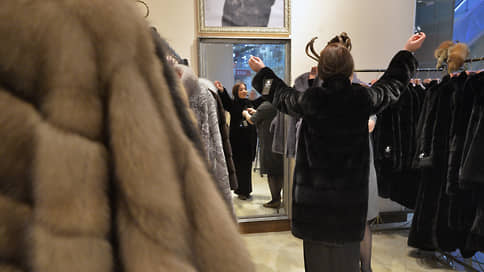The trend turns out to be furious – Kommersant FM
[ad_1]

The fur store chain Elena Furs is facing bankruptcy. According to Vedomosti, the claim was filed by the Tax Service. At the end of December, the court introduced a monitoring procedure in the company. The exact amount of the claims is unknown, but before this the Federal Tax Service put forward claims to the network for more than 400 million rubles. Elena Furs tried to challenge them, but to no avail. The chain owns 15 stores in Moscow and the regions. The official website says that its factories are located in Russia, Greece and Italy.
The store’s financial problems may be related to the general anti-trend for natural fur, noted Irina Karimova, head of the FashionEducation online project: “The active efforts of organizations that promote, let’s say, the theme of cruelty-free, have led to the fact that consumers themselves are already beginning to refuse products made from natural fur precisely in order to be more socially responsible.
In addition, let’s not forget about the very powerful lobby of clothing manufacturers themselves, including those made from faux fur, in order to promote their own products. That is, two very powerful processes are going on in parallel.
On the one hand, this is beneficial to the fashion industry. On the other hand, consumers themselves are beginning to take a more responsible approach to consumption issues. In general, all this has led to the fact that the number of purchases of products made from natural fur is decreasing.
Of course, it is much easier to work with faux fur, because it can be dyed in different colors and is more wear-resistant. If we look at what’s happening on the catwalks, many brands, from Vivienne Westwood to Russian companies, are actively using it.”
Over three years, the fur coat market in Russia has shrunk by a quarter: the number of manufacturers and sellers has decreased. The RIA Novosti agency reported this in early January with reference to analytics from the Kontur.Focus service. However, some players look at the situation positively.
The market had pessimistic forecasts, said Sergei Stolbov, president of the Russian Fur Union, but they did not come true: “There is a return to Soviet-era trends, including hats, various fur accessories, handbags, and so on. Initial forecasts for 2023 predicted a decline in sales of new products by 10-15%. But reality exceeded all expectations. We expect an annual increase for the first time in the last three years, including the COVID-19 pandemic.
There is some reduction in the number of stores this season, but we had too many for such a small industry. Previously, only the lazy did not sell fur products.
Now the number of players is being reduced, the market is being streamlined, and the quality of products is improving.”
At the same time, according to marketplace statistics, sales of fur coats are growing. True, products made from eco-fur are in noticeably greater demand. And the dynamics in this segment are much more active, noted Timur Fakhrutdinov, product manager of the Anabar analytics system:
“The demand for fur coats begins to grow in October and reaches its peak in early December. In 2023, revenue in this category on Wildberries amounted to more than 9 billion rubles, and products made from natural fur were ordered in money for 2.6 billion rubles, and from artificial fur – for 6.5 billion rubles. Compared to last year, revenue as a percentage for the year increased by 55% for natural fur coats, and by 235% for artificial fur coats.
Consumers prefer fur coats that are below the knee length. The cut is always straight, loose oversized. The composition is mainly eco-fur and polyester.
There are a lot of leftovers in the category of mink and sheep wool coats. In terms of color, preference is given to white products, this is 22% of all orders. Black fur coats – 19%, beige – 18%.”
From April 2023 in Russia, all products made from natural fur must have a single label. Fur coats and sheepskin coats, sheepskin coats and hats must have radio frequency RFID tags. They store all information about the products, and the system controls the movement of genuine fur products at all stages.
Everything is clear with us – Telegram channel “Kommersant FM”.
[ad_2]
Source link





